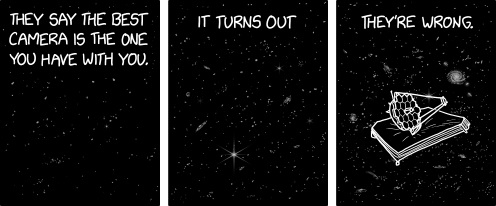In the star field they released there was a
little smudge that is a galaxy from 13.1 billion years ago. They got the spectography of it, and can tell stuff
The spectrum itself was produced by JWST’s NIRSpec instrument, which uses tiny windows to isolate and analyse the light from objects within the field of view of the telescope. In this case, only the ancient galaxy’s starlight was allowed to pass through in order to reveal its chemical signatures.
Among the various hallmarks of different elements within the galaxy was a particular fingerprint – what astronomers call an emission line – of glowing oxygen gas, with a wavelength of 436.3 nanometres. The NIRSPec team had hoped they’d be able to observe this emission line in extremely distant galaxies, says Bunker, but they anticipated having to search “dozens or hundreds” of targets to uncover it. “I don’t think we really dreamt that within the first, essentially publicity, snap that it would be there. That’s really quite incredible,” he adds. It is all so sudden that the galaxy doesn’t even appear to have a name.
The reason the oxygen line is so important is that astronomers use it to calibrate their measurements of the compositions of galaxies. If you can see this line with your instruments, and are able to compare it to other oxygen emission lines in a galaxy’s light, you unlock a way to translate the apparent prominence of different chemical fingerprints in a spectrum to how much of those chemicals are really in the galaxy. Scientists had done this for nearby galaxies before, says Bunker, but not for far-off ones like the smudge of light scrutinised in the new data.
Insights like these have the potential to revolutionise what we know about the early universe. “There is a missing billion years in our understanding of the evolution of our universe,” says Chapman. “From around 380,000 years after the Big Bang to about a billion years after we have very little information. Now JWST is being able to dive right back into that era.”









